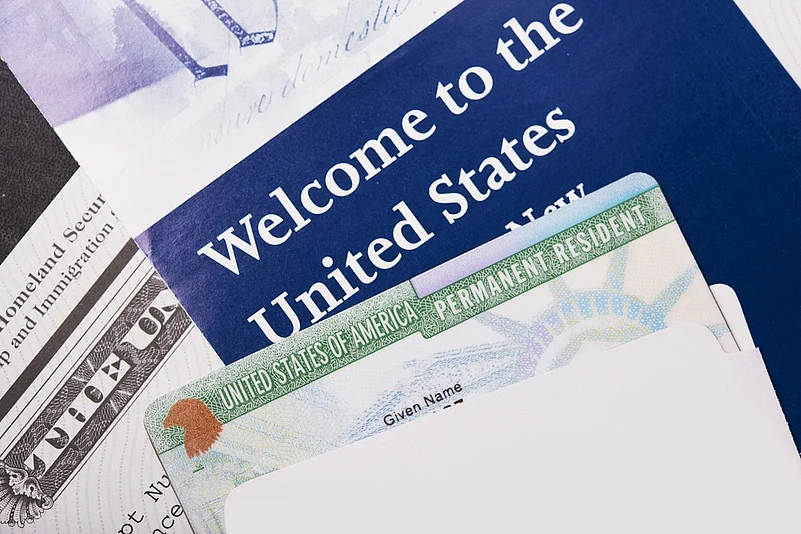The EB-5 visa programme is an immigrant investor visa programme that the US Congress created in the 1990s. It allows immigrant families (investor, spouse and two children below the age of 21 years) to obtain a lawful permanent residency of the US in lieu of a minimum amount of $900,000 in a target-employment area (TEA) and $1,800,000 for non-TEA. The applicant can either apply via a regional center or direct route.
The EB-5 programme enables cross-border trade between the US and India, providing Indians access to the US consumer market, leading to growth and expansion of business at home. In addition, it serves as an excellent option for Indian students looking to obtain work experience after graduating in the US. EB-5 is the safest and fastest route for Indians to get legal residency in the US.
Who can apply?
An investor along with spouse and unmarried children under the age of 21 at the time of filing the application can apply for an EB-5 investor visa.
We see many Indian parents sponsoring EB-5 investor visas for their children, especially those over 21 and above, to secure post-graduation employment.
As per the latest visa bulletin, Indian nationals are currently not subject to a visa waiting list. In contrast, countries like China and Vietnam are in visa retrogression and experiencing a long waiting time.
Source and Path of Funds
As the applicable legal regulations, enforced by the United States Citizenship and Immigration Services (“USCIS”) for deciding the outcome of an EB-5 application, specify, sufficient proof must be submitted that all investment capital was “obtained though lawful means”.
The investor must demonstrate and provide sufficient documentation of the source and path of funds for the investment. USCIS shall need evidence of the “root source and path of funds” for the remitted investment amount.
Here are some valid ways to fund an EB-5 investor visa:
Typically, most investors’ source of funds for EB-5 investment are employment earnings, business profits, investment — shares, mutual funds, fixed deposit, proceeds from the sale of property — owned or inherited, a gift from family or friends, loan against collateral, or a combination of any of the above sources.
Enclosed below is a hypothetical scenario we see from Indian clients with regards to the evidence requirements for source of their $900,000 funds:
Example:
Mr Shetty started a pharma company in Bengaluru on December 5, 1995 with a capital investment of Rs 100,000, which was gifted by his father (own savings from salary). Over the years, he has taken out salary and excess profits which were invested in mutual funds, shares, fixed deposits. He decided to liquidate the FDs and sold shares worth half a million dollars (Rs 3.5 crore approximately) to obtain the capital for the EB-5 investment. The FDs and share purchases were made in multiple transactions between 2000 and 2020.
USCIS shall need evidence of bank statements from 2000 to 2020 to see what actual funds were used for the investments. For instance, on April 5, 2002, there is a credit entry in the bank account for Rs 75 lakh as dividend and profit received. On April 15, 2002, there is a debit entry for Rs 50 lakh share purchase of XZY company. So the purchase of those shares easily connects to the profit received with a corresponding debit and credit entry, and those Rs 50 lakh shares are worth Rs 2 crore as of February 24, 2021. Then those are clear for liquidation and use for EB-5 investment.
On June 28, 2008 the investor purchased a real estate property in Indiranagar for Rs 1 crore, for which he liquidated his fixed deposits, which were opened from his salary and bonus income over the years and a gift of Rs 25 lakh from his father (sale of agricultural land which he inherited). In 2020, he sold that property for Rs 4 crore to invest in EB-5. We then examine the bank statements to trace the cumulative FDs for Rs 75 lakh from the salary and bonus, inheritance documents, sale deed of agricultural land, followed by sale-purchase agreement of 2008 and corresponding bank statements along with the sale-purchase agreement of 2020 and corresponding bank statements. This exercise goes back until the root source and path of funds are linked and clean, such as sale-purchase agreement, FD receipts, inheritance documents, etc.
In a recent judgment, it was upheld, the unsecured loan shall qualify as a legitimate source of funds for an EB-5 investment. However, it is crucial to consult an immigration attorney before making any decision to use an unsecured loan as the source of funds. The investor must demonstrate, along with a preponderance of evidence, that the funds used for the investment came from legal sources.
Outward Remittance
A resident individual can freely remit up to the $250,000 each financial year for any permissible current or capital account transactions or a combination of both under the Liberalised Remittance Scheme (LRS) introduced by Reserve Bank of India. The LRS is available for minors as well who are resident individuals. Now the question is, how do we send $900,000 in one financial year?
If the family consists of four members, they can remit $1 million in one financial year. The scheme allows consolidation of remittance of family members subject to individual family members complying with its terms and conditions.
USCIS and RBI both require all investment remittances to comply with applicable Indian laws and FEMA (Foreign Exchange Regulation Act). If you are an NRI/OCI, the rule differs based on residential status.
To mitigate the risk of non-compliance, it is essential to plan outward remittances and send remittance only when approved by a qualified FEMA professional and chartered accountant.
To conclude, it is important to select the source and path of funds for the investment and document it with sufficient evidence to satisfy USCIS. It is advisable to consult an immigration attorney to file the EB-5 investor visa petition to avoid denial based on the source of funds.
The writer is an attorney at Davies & Associates LLC.
DISCLAIMER: Views expressed are the author's own, and Outlook Money does not necessarily subscribe to them. Outlook Money shall not be responsible for any damage caused to any person/organisation directly or indirectly.

























